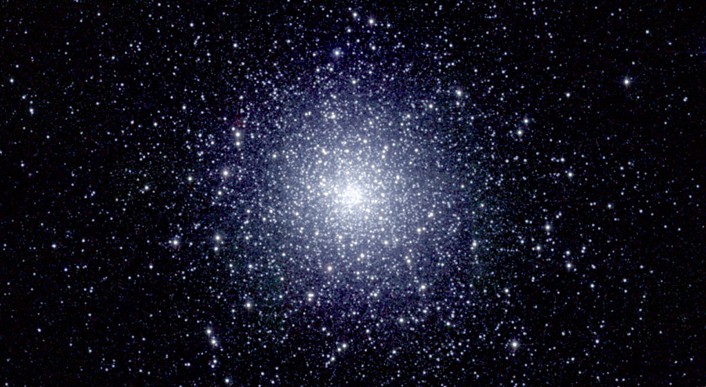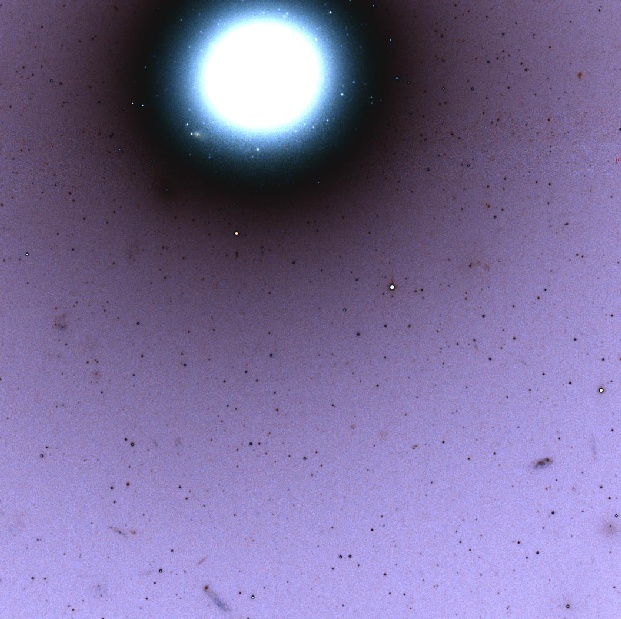Project Overview - Objective 2
Globular Star Clusters in Coma
How do galaxies form? This is one of the key questions studied by
astronomers today.
The Coma Cluster Treasury Survey aims to
provide insight into this question by studying "globular star
clusters". Some of these dense, ball-like collections of stars are
among the oldest known objects in our Universe. As such, globular star
clusters have effectively witnessed and followed the formation and
evolution of galaxies, and in some cases even predated them.
They are of special interest to astronomers because of what they can
tell us about how and when galaxies formed.

One of the Milky Way's 200 or so globular clusters, 47 Tucanae (shown here) is our galaxy's second brightest globular cluster after Omega Centauri. [Image created by Dr Thomas Jarrett, IPAC/Caltech, 2MASS.]
In general, the stars within any given globular cluster formed at the same time and share the same chemical make-up. We say that they have a "single stellar population". This makes it easy to understand the light that we receive from globular clusters. What we learn helps us to understand the light that we observe from galaxies, which can contain stars of many different ages and chemical compositions (i.e., multiple stellar generations).
While some galaxies in the "Local Group" of galaxies, in which the Milky Way is a member, have hundreds of globular clusters, other much bigger galaxies, like the ones found in the more distant Coma galaxy cluster, have tens-of-thousands of globular clusters. Several things may ignite bursts of star formation within a galaxy and cause the associated creation of (some of) the surrounding globular clusters. This may include the violent build-up of gas or collisions between galaxies. We find traces of these spurts of star formation in the globular cluster systems associated with galaxies. So, by studying the globular cluster systems around galaxies, we learn more about how the galaxies themselves formed and evolved over time. For example, the presence of two globular cluster populations, one old and one young-ish, would signal a significant secondary epoch of galaxy evolution after the initial creation of a galaxy.
Over the past few years it has become apparent that the bright globular clusters surrounding the brightest cluster galaxies have rather complex evolutionary histories. These globular cluster systems are likely conglomerates of globular clusters formed along with the main galaxy, plus gravitationally-accreted star clusters and compact stellar systems such as "ultra-compact dwarf galaxies". Using the Coma Treasury Survey's high spatial-resolution images, we shall investigate the globular clusters around the big galaxy NGC 4874 at the centre of the Coma galaxy cluster and also the intra-cluster globular cluster population.

Within the core of the Coma galaxy cluster is the giant elliptical galaxy NGC 4874 . In this HST image NGC 4874 (upper middle) is surrounded by a swarm of globular clusters; virtually every "point-source" in this image is a globular cluster. [Image credit: Thomas Puzia, Herzberg Institute of Astrophysics.]
